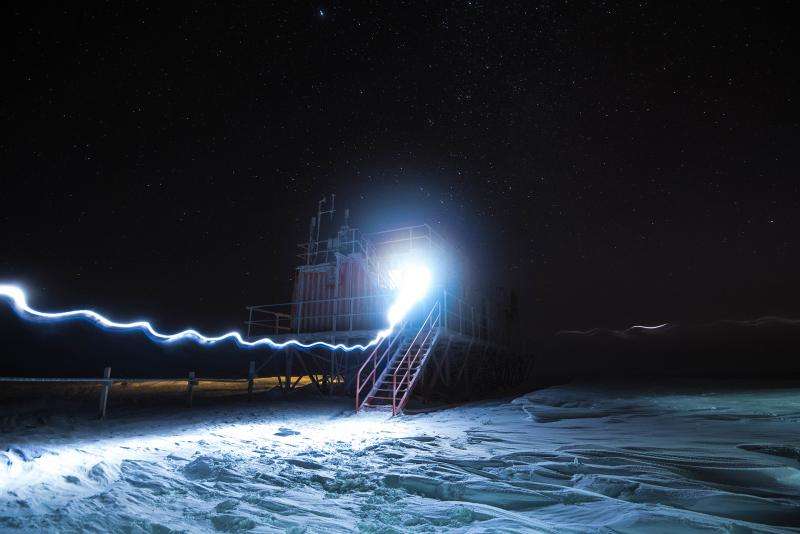Credit: ESA/IPEV/PNRA–B. Healey
This modified container in Antarctica is part of the Franco–Italian Concordia research station and is used to store snow samples –and with temperatures regularly below –70°C no extra refrigeration is required. The environment around the mountain plateau does not get much more alien than this.
ESA-sponsored medical doctor Beth Healey is spending nine months in Concordia to run experiments for ESA in preparation of space exploration missions.
As Concordia lies at the very southern point of Earth, the Sun does not rise above the horizon in winter and does not set in summer. The crew must live without sunlight for four months of the year. At 3200 m above sea level in the world's largest desert, the air in Concordia is very dry and holds less oxygen.
With three weeks of darkness to go, Beth ventured outside with Italian scientist Giampietro Casasanta to collect and store samples. Giampietro is doing glaciology research while Beth is searching for extremophiles – organisms that can survive the extreme conditions found in Antarctica and on other planets or comets.
The trail of light is from Giampietro's headlamp as he walked to the container and is visible because the camera was set to a long-exposure.
Provided by European Space Agency
























